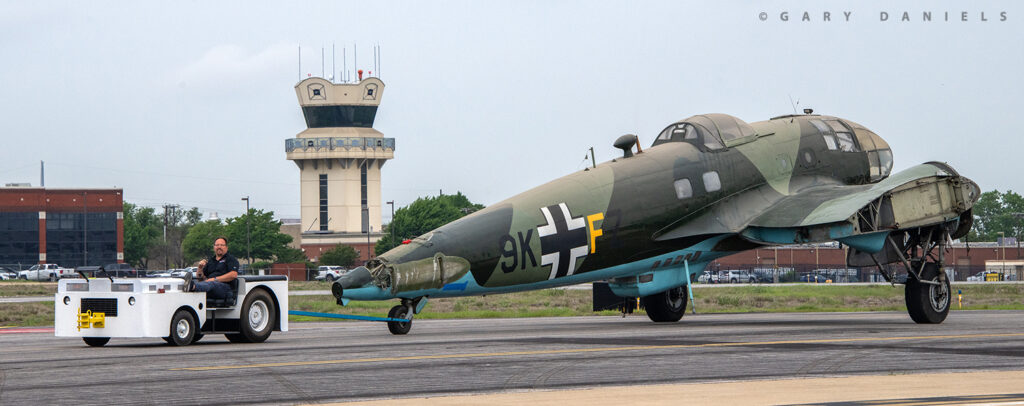
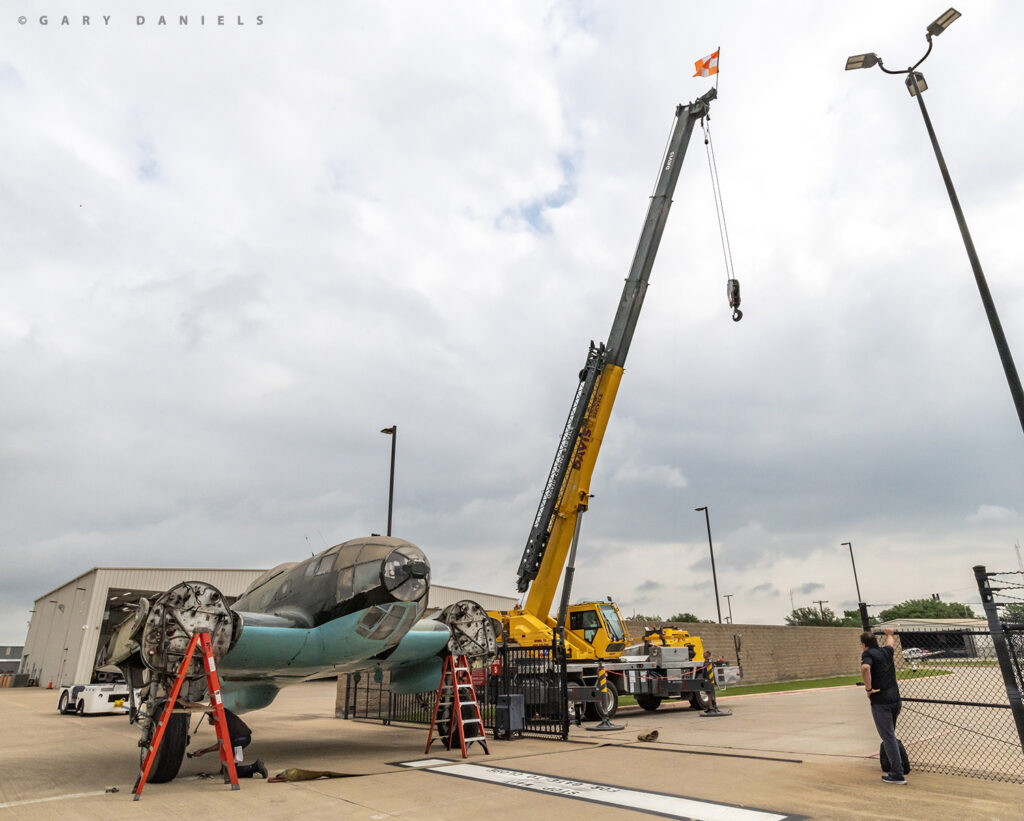
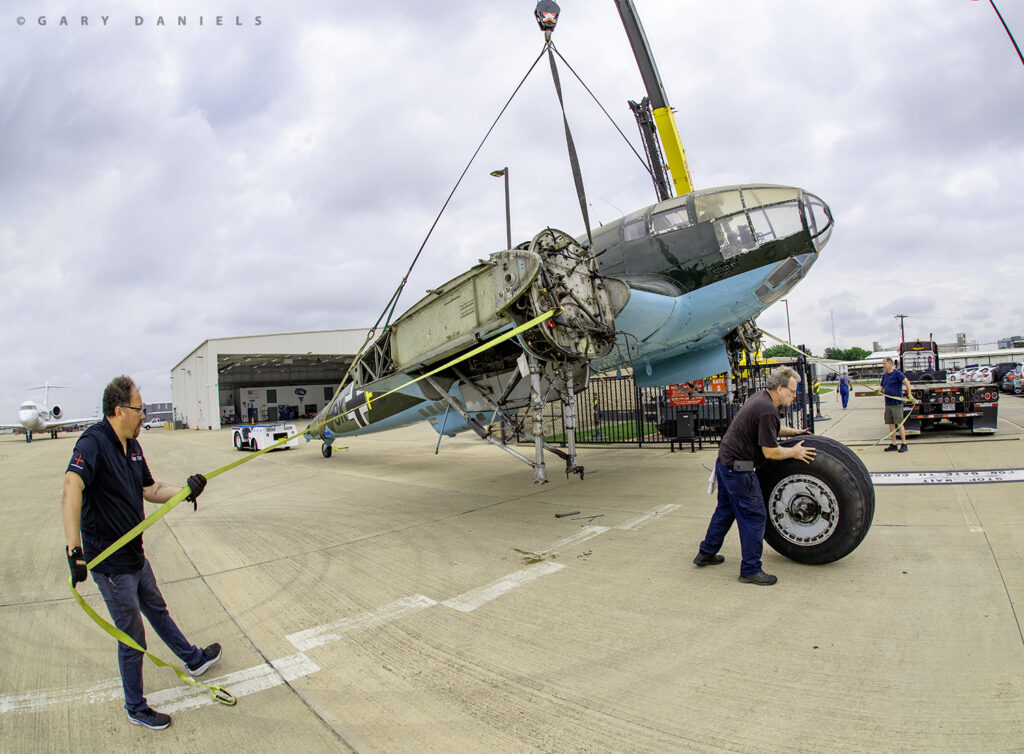
The museum’s 2.111E was built as s/n 155 and taken on charge by the Ejército del Aire (Spanish Air Force) as B2-H-155 in 1950, but due to a lack of engines was put into storage. In 1956, it was fitted with Merlin engines and modified to photographic and map-making configuration. It was accepted by the Spanish Air Force on December 14, 1956, as B2-I-27, to serve with the Spanish Air Force Cartographic Group.
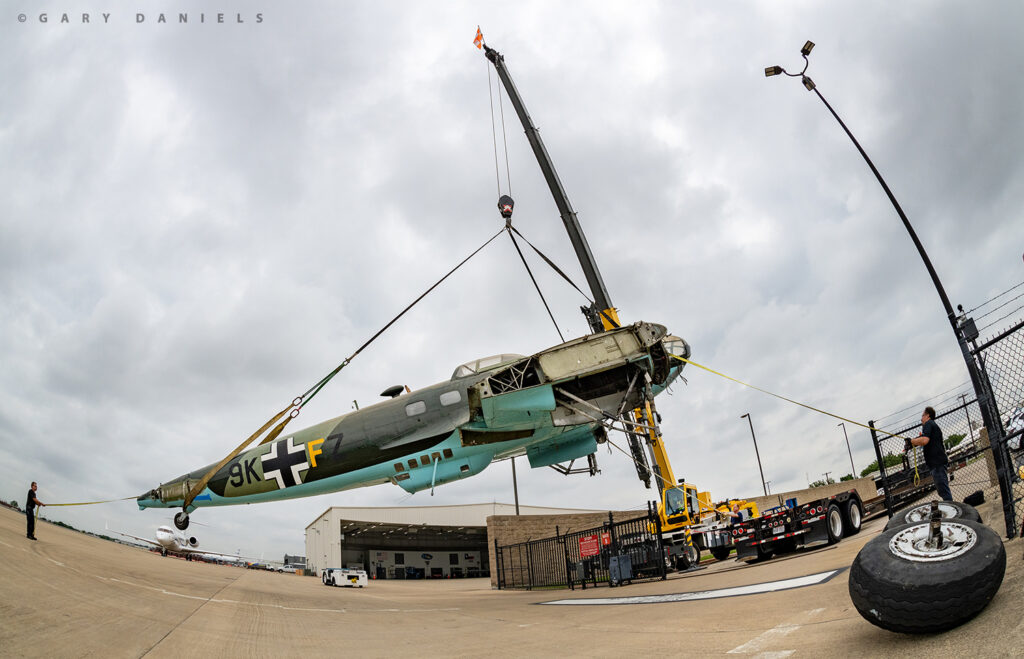
In 1968 it was painted in WWII Luftwaffe colors and used in the film Battle of Britain, one of more than 30 CASAs used as stand-ins for the unavailable genuine Heinkels. From 1970 to 1972, the aircraft was operated by 403 Escuadrón from Cuatros Vientos, near Madrid. In November 1972, it was transferred to 406 Escuadrón at Torrejon in Spain. In January 1974, it was transferred to 46 Grupo in Ganda, Canary Islands, and active in the Spanish campaign in Western Sahara.
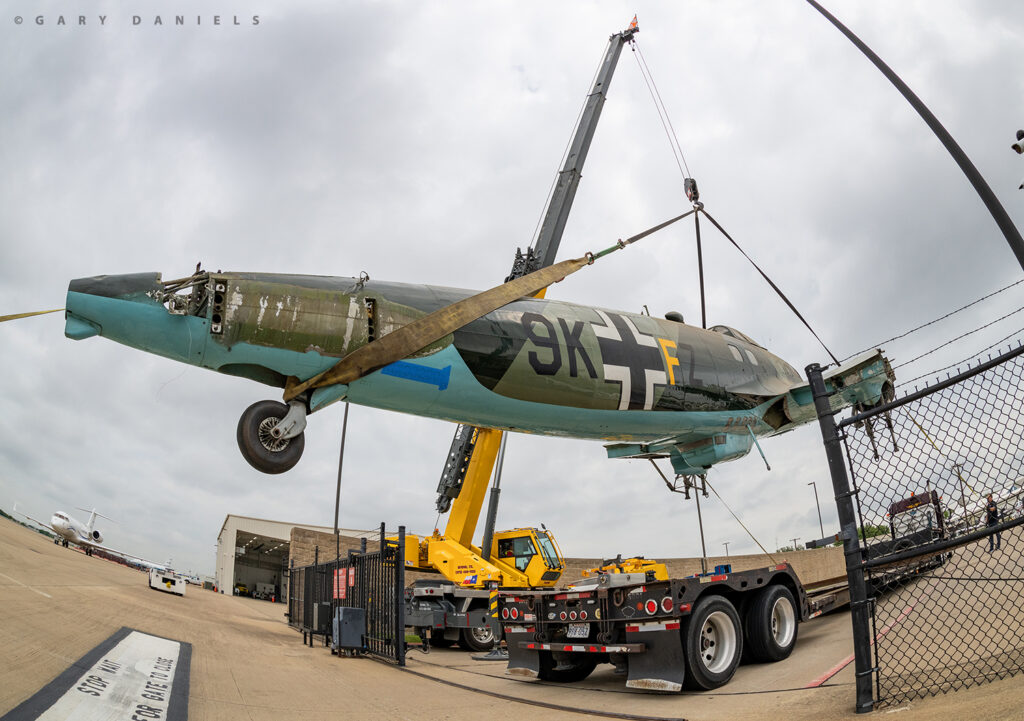
On January 21, 1975 B2-I-27 was returned to the air armaments factory in Seville, officially listed as surplus, and placed into storage: from all available information it appears that B2-I-27 was the last CASA 2.111 in active service with the Spanish Air Force.
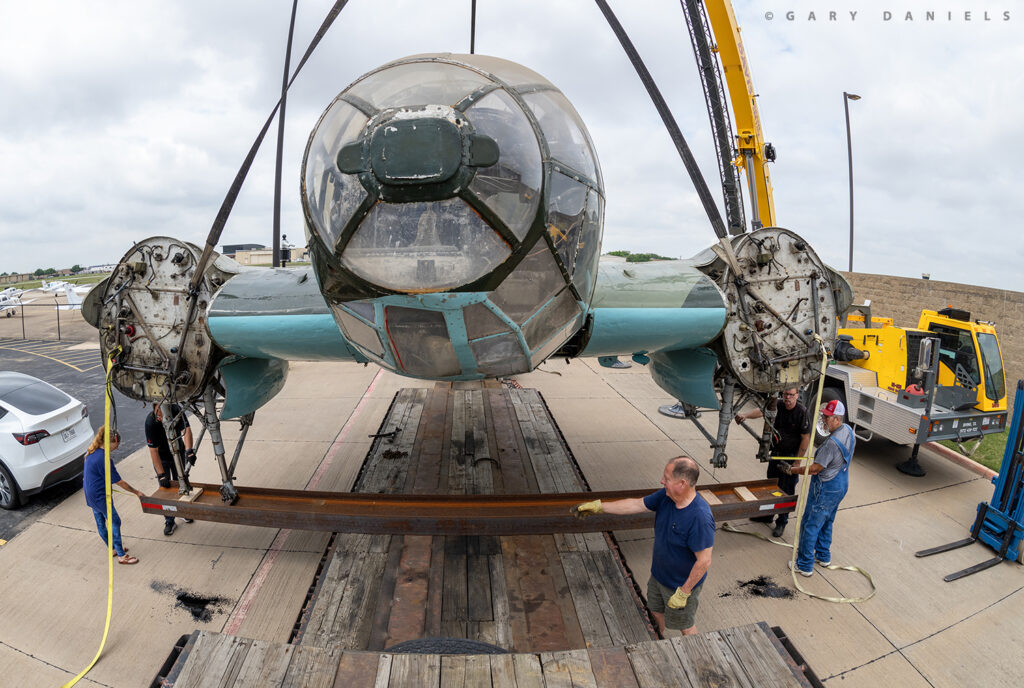
Now registered N99230, in October 1977 the CASA was ferried across the Atlantic by British warbird pilot Neil Williams for new American owner Dolph Overton, receiving a new color scheme representing Kampfgeschwader 51 (KG51) “Edelweiss” of the German WWII Luftwaffe. It was loaned to the Confederate (now Commemorative) Air Force for a couple of years in the late 1970s, the organization taking on maintenance and operation duties at his expense, before the aircraft returned to Overton’s base in Florida. In 1983 the aircraft was sold to David Tallichet who displayed it at the Combat Air Museum in Topeka, KS.
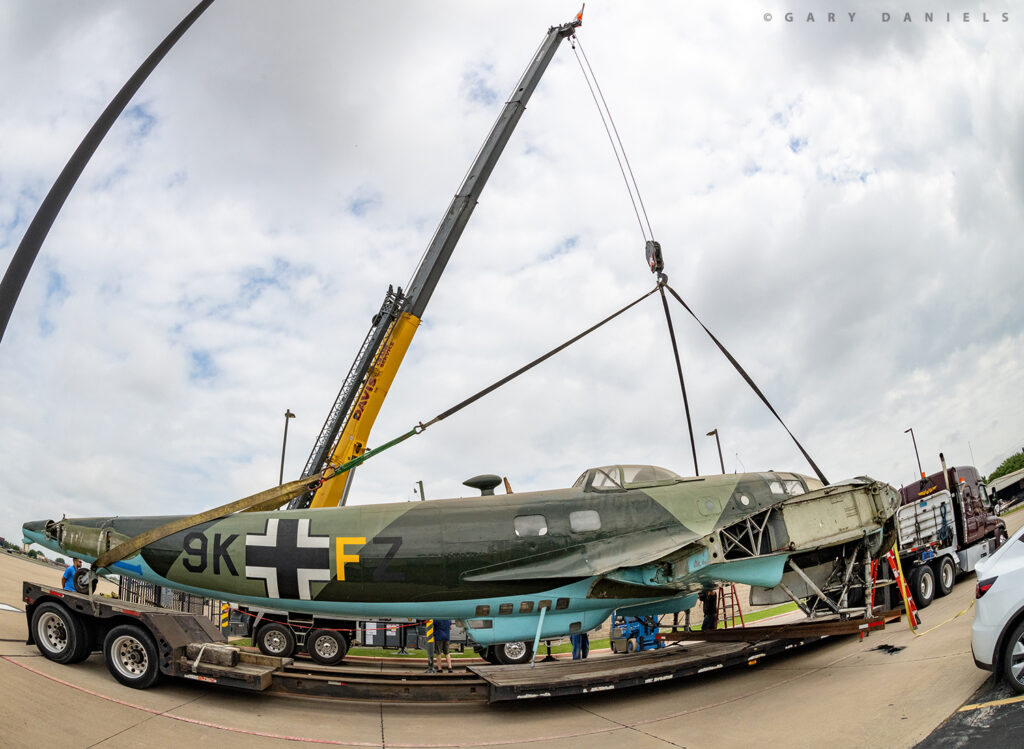
The Cavanaugh Flight Museum added B.2-I-27 to its collection in 1995, the aircraft’s delivery flight into Addison Airport being its last to date. Today, however, the fuselage was airborne for the first time in 29 years… although not in the best of ways! At this time, there is no news on plans for the museum collection.


